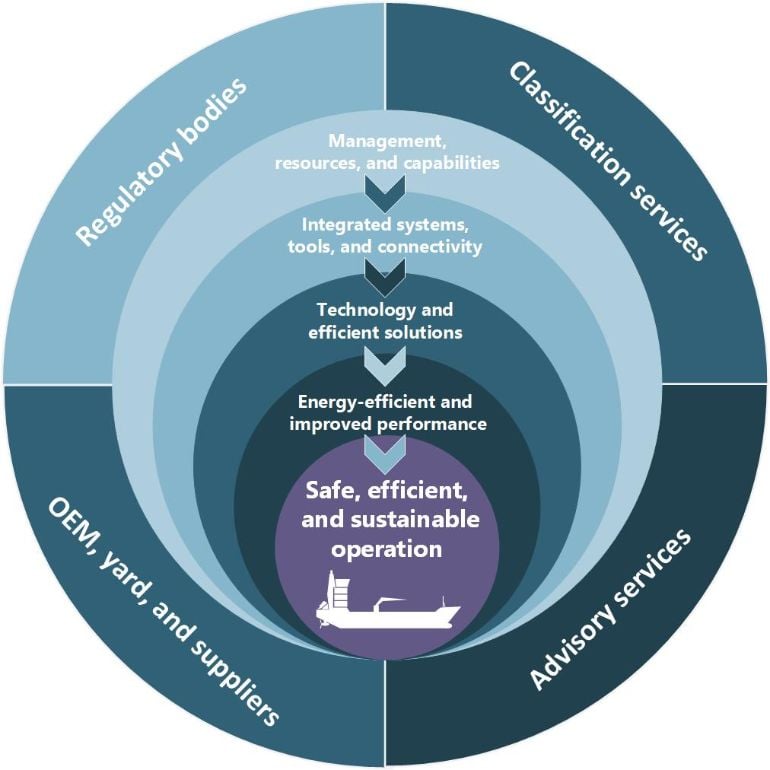Collaboration for greater success
Maritime’s shift towards digitalization and decarbonization will require all stakeholders to contribute, and to develop services and solutions that move the industry in a common direction.
The complexity introduced by new processes and vessels that are increasingly specialized can be exacerbated by working in silos and limited collaboration between maritime stakeholders. Further, not all organizations have the necessary resources, capabilities, and support systems in place to utilize the full potential offered by the new technology and systems. To overcome this challenge, many companies need to collaborate more with other stakeholders who can offer this specialistic competence and experience. DNV’s Veracity platform can be used as an efficient tool for data sharing and collaboration.
Ship or MOU owners trying to optimize operations will always find their efforts limited if they are using only existing technology and solutions, and having to rely on vendors (OEMs), yards, and other suppliers providing services and products with digital capabilities that offer opportunities for optimization.
Working in dispersed teams creates new risks
The increase in the variety and number of stakeholders, and more cooperation, is resulting in dispersed teams and introducing new risks that need managing through rules and standards. Collaborating closely with regulatory bodies, DNV is continuously developing rules and services to keep up with technological developments, ensuring that new technology and solutions are implemented and used safely and efficiently. Additional notations like D-INF, DDV and REW are examples where DNV works with the industry to develop and set appropriate safety standards and define a framework to ensure an efficient and reliable implementation of new solutions.
Organizational structures need to be revised
The inner circles of the figure below illustrate how important elements should be structured and connected to establish an organization that is able to obtain safe, efficient, and sustainable operations. The outer circle illustrates which other stakeholders may affect the process by introducing rules and regulations as well as new technology, solutions, and services to increase the efficiency and support the development.

Safe, efficient, and sustainable operations linked to class, advisory, OEM and regulatory bodies
Related downloads and links
Maritime Safety Trends: Advancing a culture of safety in a changing industry landscape
Download the white paper
Veracity data platform
Learn more and discover top of the line tools and data sets at the marketplace
Reducing greenhouse gas emissions from ships
Visit the IMO website